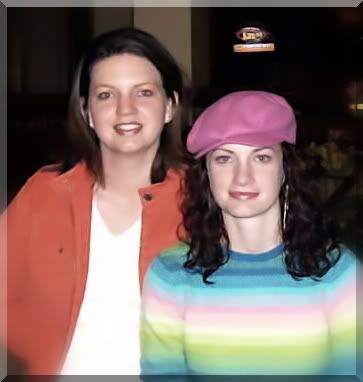 Verve in Bloom has moved to Wordpress.
Verve in Bloom has moved to Wordpress.From now on, you'll find us at:
http://verveinbloom.wordpress.com
Hand-picked public relations, marketing and design ideas
 Verve in Bloom has moved to Wordpress.
Verve in Bloom has moved to Wordpress. There are more than 70 million blogs around the world and more are being created every second. Blogs are the new kid on the media relations block – So how do they fit in?
There are more than 70 million blogs around the world and more are being created every second. Blogs are the new kid on the media relations block – So how do they fit in? Apologies all around for being a bit slow with the posts so far this month. I think with the rise in temperatures comes an stymied ability to multi-task effectively. And for some reason, that meant In Bloom fell off a bit.
Apologies all around for being a bit slow with the posts so far this month. I think with the rise in temperatures comes an stymied ability to multi-task effectively. And for some reason, that meant In Bloom fell off a bit.
 Social media means marketing departments, public relations people and CEOs have to let go. They have to let go of control. They have to let the conversation develop and dialogue take place.
Social media means marketing departments, public relations people and CEOs have to let go. They have to let go of control. They have to let the conversation develop and dialogue take place. Huddle: A file-sharing, to-do list making, message-leaving, approval-asking collaboration tool. My favorite part is that you can ask someone on your team for approval. If that person edits your document, you can track the edits, as well as ensure that you get the approval (from your supervisor or even a client) that you need. You can give it a whirl for 30 days to see if it works before you sign on for a small per-month charge.
Huddle: A file-sharing, to-do list making, message-leaving, approval-asking collaboration tool. My favorite part is that you can ask someone on your team for approval. If that person edits your document, you can track the edits, as well as ensure that you get the approval (from your supervisor or even a client) that you need. You can give it a whirl for 30 days to see if it works before you sign on for a small per-month charge.

 Last week I had the privilege of hearing Jack Hart speak at a local PRSA luncheon about his latest book, “A Writer’s Coach.”
Last week I had the privilege of hearing Jack Hart speak at a local PRSA luncheon about his latest book, “A Writer’s Coach.” Working with a marketing, PR and design firm should be fun. Your communication team should bring lots of expertise and plenty of fresh ideas. But creativity has its place. Creativity must be part of an overall campaign with your long-term interests at heart.
Working with a marketing, PR and design firm should be fun. Your communication team should bring lots of expertise and plenty of fresh ideas. But creativity has its place. Creativity must be part of an overall campaign with your long-term interests at heart. Regardless of your industry or your profit-making status, establishing yourself as an expert brings customers to your door, the media to your phone and visitors to your Web site. But how do you establish expertise?
Regardless of your industry or your profit-making status, establishing yourself as an expert brings customers to your door, the media to your phone and visitors to your Web site. But how do you establish expertise?



 I woke up four years ago thrilled for my first day of college. Then, rudely enough, I woke up this morning and realized my graduation ceremony is precisely 24 days too soon. Though I technically graduated early after winter term, much like my friends, I continue to feel the pressure of the 9 to 5 “real” world barreling down.
I woke up four years ago thrilled for my first day of college. Then, rudely enough, I woke up this morning and realized my graduation ceremony is precisely 24 days too soon. Though I technically graduated early after winter term, much like my friends, I continue to feel the pressure of the 9 to 5 “real” world barreling down. I love bareMinerals SPF 15 Foundation. I love it so much that I can’t stop telling anyone who will listen about the makeup’s silky, feather-light, and yet complete, coverage. The makeup will revolutionize your morning routine forever and I’ve recently turned a handful of friends into believers.
I love bareMinerals SPF 15 Foundation. I love it so much that I can’t stop telling anyone who will listen about the makeup’s silky, feather-light, and yet complete, coverage. The makeup will revolutionize your morning routine forever and I’ve recently turned a handful of friends into believers.



